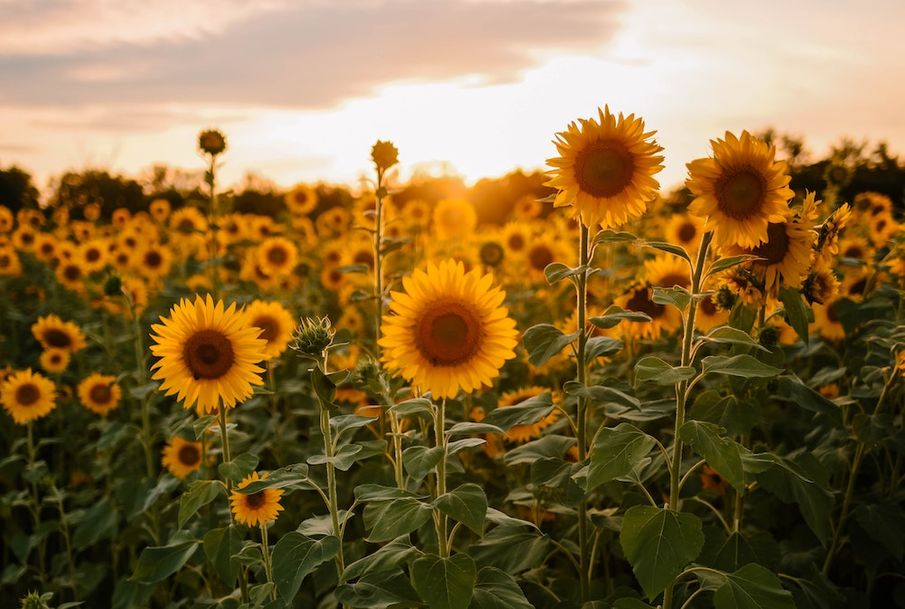How to create some honeybee hotspots this summer, when bees’ food supply is most stretched
Honeybees are wonders of nature. You may see them buzzing from flower to flower at this time of year – but that’s just one pollination pitstop, as honeybees can cover three miles in one trip. In fact, a colony of around 60,000 bees will travel the equivalent distance from the earth to the moon every day!
In turn, honey bees are responsible for pollinating a third of the fruit and vegetables we consume, as well as producing honey – with different flowers producing distinct flavours. In their lifetime, 12 honeybees will produce a teaspoon of honey – their collective impact on the environment and food production shouldn’t be underestimated.
Sadly, the UK’s honeybees have been in long-term decline. So, Rowse, the UK’s favourite honey brand, is passionately spearheading positive change through Hives for Lives – a programme of vital initiatives that protects the bees, and improves livelihoods through beekeeping.
The good news is we can all play a vital role in protecting and saving this incredible species. Planting certain seasonal flowers is kind to the bees, and you’ll enjoy a ‘bee-autiful’ garden as a result! Plantlife’s Every Flower Counts survey showed that even just letting your lawn grow a little longer can generate enough nectar for 10 times more bees and other pollinators. Watching your flora bloom, and bees delighting in pollination, is highly rewarding – especially when our buzzing friends’ food is in short supply over the summer.

Illustration | Rosan Magar
Here are five bee-friendly flowers to plant that are perfect for this time of year, and will create a haven for these vital pollinators:
Lavender
The scent of lavender is as lovely as its pretty purple flowers. This plant can live for years, flourishing best when planted in a sunny spot, especially through June and July. With many flowers and a high nectar content, our buzzing friends are bound to make a beeline. This plant is popular with other pollinators too; bumblebees spend 1 to 1.14 seconds per lavender flower, while honeybees delight in its pollen for 3.5 seconds.
Top tip – from ‘bee’ to you: Lavender can also aid sleep, with its distinct scent believed to help invoke feelings of calm.
Borage
Depending on the variety, borage can be annual or perennial, and grows quickly from seed. This plant also reseeds itself, so can easily be grown the next year by allowing the seedlings to grow, or they can be transplanted. Borage is a hotspot for honeybees because its flowers replenish nectar often. Therefore, our buzzing friends can frequently return to feed. For this reason, borage attracts other insects like butterflies too.
Top tip: The beautiful blue flowers that bloom on borage are the perfect addition to a summery cocktail or mocktail. Young borage leaves also add texture to salads.
Marjoram
Marjoram has pretty pinky white flowers, which look lovely in a garden. It is great for alluring a whole host of nature’s little visitors, from honeybees to bumblebees, butterflies, and hoverflies. It blooms in summer when the bee food supply is most stretched, and is also easy to grow.

Illustration | Rosan Magar
Top tip: Marjoram belongs to the same family as oregano, so is delicious on a pizza, with roasted meats, or in soups! Marjoram tea is also popular, made using dried herbs, hot water, and honey.
Helianthus (Sunflowers)
Helianthus – otherwise known as sunflowers – bloom for several months throughout the year, starting in August. This towering plant makes a real statement in the garden, and will certainly catch a honeybee’s attention! Its vibrant yellow petals also attract bumblebees, butterflies, and hoverflies to the hundreds of tiny tubular flowers in the middle of the flower. This centre is brimming with nectar, which is the main source of carbohydrates for our buzzing friends, as well as fluffy protein-packed pollen that collects on their bodies. Sunflowers are also considered to be ‘low-infection’ flowers – their pollen has medicinal and protective effects on bees, helping to improve bee colony health.
Top tip: Sunflowers are easy to grow, and can reach up to two metres tall! Why not challenge your family to a fun competition to see who can grow the tallest one?
Fleabane
This delicate British wildflower, which belongs to the daisy family, can be planted in grass or flower beds. Fleabane produces a mass of lovely white flowers that may be tinged by lilac or yellow, with a sunny centre that entices honeybees, bumble bees, flies, and butterflies. A perennial plant that flourishes from late spring to autumn, fleabane is an oasis for honeybees at cooler times of the year when flowers are sparser.
Top tip: This low-maintenance plant is ideal for filling bare spots beneath shrubs and trees.


Comments